Introduction

Four years ago, I entered the Catholic Church, after more than thirty years as an Evangelical Protestant. I do not think of my story in terms of “leaving Protestantism.” I never thought that I was leaving or abandoning the faith I grew up with; in my mind, I was a coming to a fuller and more complete understanding of the truth. I would not say that there was anything fundamentally deficient in my faith as a Protestant that would cause me to abandon it; instead it was incomplete, immature, and unfulfilled. If my journey must be put it in the terms of leaving Protestantism, it is true that I did have to let go of some particular doctrinal formulations; but nothing I believe now is a contradiction or renunciation of anything I believed before. I feel that I now see the fuller picture, and have a fuller, more fulfilling relationship with God.
Growing Up
The story of my journey truthfully begins years and years ago, in my earliest childhood and earliest experiences as a Christian. I can see a thousand signposts all along the way that ultimately led me here, small realizations and inclinations and longings that didn’t find fulfillment until years later.

I grew up mostly in a Pentecostal, Charismatic sort of Christianity; for most of my growing-up years I was a member of a vibrant Assemblies of God church in Decatur, Alabama. I had spent my earliest childhood in a small nondenominational church, then several years in the United Methodist church, visiting various Baptist churches along the way. I prayed the “sinner’s prayer” when I was three years old, was baptized when I was twelve, and had a committed and sincere but pretty superficial faith for most of my childhood. I never had much formal Bible study or instruction in doctrine. The few times I encountered any form of deep study, I lapped it up voraciously.
In high school I had a very dynamic youth pastor, who inspired me to be “on fire” for God and to strive to win my school for Christ. It was a very fervent and emotional faith. Being emotionally volatile like many teenagers, however, this also made it a volatile faith, and not a very firm foundation for a relationship with God. By the end of high school, I ended up feeling very hurt and abandoned by my church, and I fell away from church involvement, though I always prayed and claimed to be a Christian. I entered a long period of spiritual wandering.
The Church That Was Lost
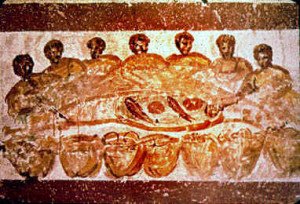
In college I was drawn eventually to the study of history. My first important mentor in history, Dr. G, was an old-school medievalist and classicist with a burning love for the great men of history. He taught me Latin, which opened my eyes to a whole new world of learning and sources; and he taught me the history of Christianity. Some of the most important classes he taught me were the History of the Christian Church, from the beginning up through the Reformation, and Medieval Latin, in which we read firsthand, in their original languages, the writings of Augustine, Gregory, Anselm, Bede, and a dozen or so other Church Fathers and medieval Christian thinkers. Dr. G was the son of a long line of renowned Lutheran ministers. When he taught Church history, his lectures came alive with love and admiration for the Church Fathers—Augustine, Thomas Aquinas, Benedict, Gregory, Bernard, and many more—and with equal love and admiration for the Protestant Reformers. He presented this dichotomy without conflict or cognitive dissonance. It laid the foundation for the intellectual development of my faith.

Through all of that study I came to a great love of the Church Fathers, too. Reading them, I found a purer, realer faith than anything I had ever known in church, something immediate and profound that seemed unclouded by the doubt and uncertainty I had always felt growing up. I never associated the Church Fathers with the modern Catholic Church. In my mind, the modern Catholic Church was something of “dead religion,” caught up in empty ritual and cold theology and devoid of any sense of a real relationship with Christ. When I read the Church Fathers, I had the sense that their Church and their faith was lost and irrecoverable, and I lamented its loss.
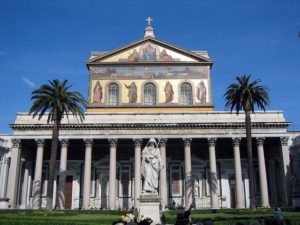
At the culmination of that study, I went with Dr. G and a group from school to Rome, the Eternal City. Over a two-week course, we traversed the 3,000-year history of Rome, having lectures in the morning and then going out in the afternoon to tour the sites that pertained to that day’s era of history. I was especially—and unexpectedly—moved by the churches. Standing at the tomb of St. Paul at the Basilica of St. Paul outside the Walls, I was overcome with emotion, as all Paul’s words in Scripture that had meant so much to me flooded back, and I knelt tearfully at the altar, thanking God for His servant. That trip became a pilgrimage for me. It was the first time in years I had really felt drawn powerfully to God and to prayer. I admired the beauty and art and history of the Catholic churches I visited, but it didn’t make me seriously consider being Catholic—this was still seven years before I would.
Striving

But my pilgrimage did awaken in me a desire to get back in church and have a renewed relationship with God. I felt very wary of my childhood faith and church—of placing so much emphasis on emotion and experience—so I read and studied and tried to come to an intellectual understanding of various systems of doctrine and reason out for myself what I believed and what church I belonged in. It was a daunting task, not having any firm foundation in theology, and I became frustrated. I eventually resigned myself to the conclusion that each of the various camps had strong arguments for their positions, that Scripture wasn’t clear enough for me to discern, and that I would study and admire the different schools equally and hope God could sort it out. During this time, I visited a lot of different churches, especially Baptist churches and Presbyterian churches.

After a year of this endeavor of striving in myself to find where I belonged in God, I again grew frustrated. I felt hurt, and rather than running toward God, I again found myself running away. I had once commented, after my years of wandering, that if God really wanted to get my attention, He should stop me in the road like he did Paul. I wished for his lot: I should have been careful what I wished for. While I was on a road trip, just north of Columbus, Ohio, my car was struck on the driver’s side door by a concrete-laden dump truck. I was medflighted to Ohio State University Medical Center, where I was found completely unresponsive, with tests indicating a deep coma or brain death.
It very well might have been the end of the road for me. I was diagnosed with a severe traumatic brain injury, the likes of which most patients do not survive, or if they do, most face serious disabilities for the rest of their lives. The doctors offered no prognosis. But my family, my friends, even many people I did not know, surrounded me with their prayers. Against the odds, I recovered. Not only did I recover, but I recovered completely, without lingering deficits, and I recovered remarkably quickly. A mere three weeks after the accident, with broken bones, I returned home to hobble through the semester of school I’d very nearly missed for good.
This near-death experience, though it took some time and some humiliation to realize it, reaffirmed my faith that God had His hand on my life and a plan for me. Swallowing my pride, I returned to church, to the church of my parents I had left so many years before. There God began a period of spiritual recovery, of rebuilding walls that I had torn down. My home church was a safe harbor and sanctuary, for a time. But I felt that it was only a waypoint, that God still was leading me onward to a fuller knowledge of the faith. I continued to visit churches and read about theology. I felt especially drawn to the intellectually rigorous Reformed theological tradition (Calvinism), and even bought myself a handsome leather-bound ESV Study Bible for my thirtieth birthday.
Veritas
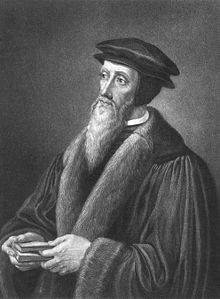
After I graduated with my bachelor’s degree in history, I went to work teaching at Veritas Classical School, a homeschool co-op. Suddenly, I was brought face to face with Calvinism in a way I hadn’t ever been before. Most of the teachers in that school system were strongly Reformed, and in my teacher training I was encouraged to teach history from that doctrinal commitment. I was fascinated by the intellectual rigor of the Reformed tradition; I enjoyed attending Presbyterian churches and loved the Reformed friends I made; but faced with apprehending and accepting some of the specific tenets of Calvinism—especially belief in an absolute sovereignty of God such that God ordains all things, even evil, and an unconditional election such that some people were created to be damned and had no hope whatsoever for redemption, by God’s sovereign decree—I blanched. Over the long weekend of that training, I was plunged into a deep despair; I resolved that either God was a monster and I had no wish to serve him or that the Calvinist understanding of God must be mistaken. I backed away from that and never seriously considered Calvinism again.

But while I was at Veritas, I was tasked with teaching medieval history, Christian Latin, and Koine Greek. They were the very things that had brought me so much love for the Early Church and the Church Fathers and the Medieval Catholic Church in the first place, and I filled my lectures with all the sentiment and longing I had ever felt for those things. I affectionately introduced my students to great popes, bishops, abbots, monks; to Church Fathers and theologians and councils; to the rich etymologies of the terms of early and medieval Christianity, and their scriptural foundations; and in teaching all this, I had to study it even more deeply than I had before, and I realized more fully than ever what a firm foundation it all was. At the beginning of the year, I had my students all read the Nicene Creed and affirm the common faith of us all—since among my students were Protestants of all stripes and even a few Catholics.
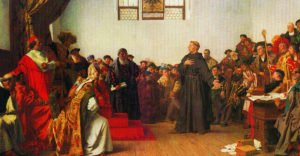
The semester culminated in the Protestant Reformation, which in my view going into teaching it, was a flowering of Christian thought and a reaffirmation of Christian principles. I tried to bring the same glowing passion to the Reformation’s characters as Dr. G had; but in the process of preparing my lessons, I was stunned to discover that the reality of the Reformation was anything but the majesty I had imagined. In addition to the heroic Luther and Calvin, I found numerous other scattered and disparate movements and sects; wide, fundamental disagreement even from the start; and the beginnings of the general factiousness that had been my experience of Christianity all my life. I realized for the first time the stark contrast of this with the glorious Church I had been proclaiming the rest of the year. Dr. G could apparently pull off the duality of presenting both without cognitive dissonance; I could not.

While I was immersed in the medieval Church over the course of that year, I discovered Gregorian chant and early Renaissance polyphony, which struck me as something heavenly and transcendent that guided me to a deeper life of prayer and Bible study. I read through the Rule of St. Benedict and the Order of the Mass. I began observing the calendar of saints as a way of remembering great Christians of the past. I even downloaded a Catholic app on my phone and began following the Catholic lectionary as a handy method for organizing my Scripture readings—since, I reasoned, somebody else had already done the work of distributing the Bible throughout the calendar. Through all of this, I denied vehemently that I was becoming Catholic or even interested in becoming Catholic. When the question was raised, and it was, I rattled off rehearsed reasons why the Catholic Church was fallen and apostate, et cetera; why I disagreed with Catholic doctrine; why I wouldn’t have any of it.
The Church That Was Found
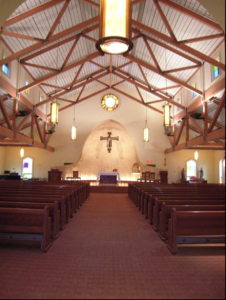
When I went to graduate school the next year, I had no intention at all of becoming Catholic. I made a list of churches to visit in my new town, and the Catholic Church wasn’t one of them. And yet completely by accident I had made a Catholic friend when I visited the campus. When she invited me to Mass, I decided to go. To my amazement, rather than the dryness and empty ritual I had expected, I found a rich, moving spiritual experience that brought me the sense that I was kneeling in communion with Christians of all ages past—and with the Lord. The next week, hungry for more, I went back.
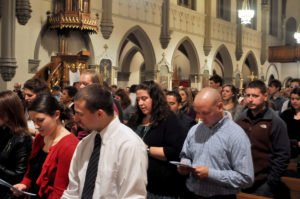
After all my years running away from experience as a criterion of faith, it was ultimately my experience of Catholicism that brought me over the threshold. Those weeks of witnessing the Mass, as I exulted in the presence of the Lord, something was happening intellectually that I hardly even realized at the time. All of those reasons I had been reciting against Catholicism were collapsing, as I saw that everything I had ever believed about Catholics was wrong: Catholics do have a very close, a very committed, a very real relationship with Christ; the theology I had dismissed as cold was living and vibrant; the ritual and liturgy was not empty, but every bit of it meaningful and worshipful.
It didn’t take me long to realize that the faith and the Church I had always admired so much in the Church Fathers was still there and still alive in the Catholic Church; that the Church still embraced, upheld, stood upon, and celebrated that heritage and foundation. The truths of the faith held by the Fathers, the ancient doctrines they affirmed, were still there and still held true. And I found that so much of what I had always been longing for and searching for was there, even the longings I had never known how to articulate. After a few months of attending Mass weekly, I began attending daily. I admitted at last that I was onto something, and decided to begin the RCIA class when it resumed in the fall.
This is not the end of the story. I had been brought into the antechamber of the Church, but there was still a process of catechesis and formation, dialogue and the occasional dispute, and studying and working through Catholic doctrine, coming to terms with what it meant in light of my experience so far. But it is the end of the beginning, the turning point of my faith journey. Now, four years after entering the Church, I feel a fuller, firmer, and more committed faith, and a deeper understanding, than I ever had before. I don’t look back on my days growing up Protestant with any disdain at all, but with a lot of love and appreciation for the firm foundation it laid, and the road it paved that led me the fullness I have found.
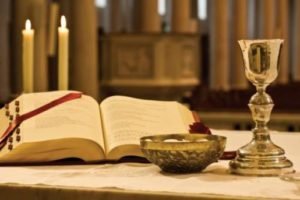
Outstanding, Joseph! I always find it helpful to understand how others got to where they are. In truth, your story, while far more dramatic, is not all that different from mine, although the destinations differ. I suspect many of us have made comparable journeys, and I find it quite wondrous, and think we are led to where we are supposed to be.
Thanks again.
Thanks so much for the kind comment, NEO. I believe that, too — and I don’t believe it’s the end, for any of us, as God calls us closer and closer to Him, “higher up and further in.”
Good to see you back Joseph. I thought you had left blogging altogether.
__ “Scoop” a.k.a. Servus Fidelis
Hi, Scoop. 🙂 Thanks for the comment. No, I’m still here. I stick my head in every now and then, and now, in the last semester of this degree, I’ve been thinking about it a lot more. Honestly I’m developing some senioritis. 😀
What a beautiful story! Thank you for sharing it with us.
Thanks so much! Thank you for writing your story, too. 🙂
Such an incredible journey! I absolutely love every paragraph of it!